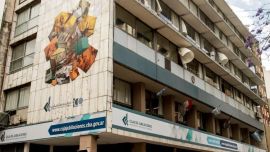Argentina goes to the polls on Sunday for “open, simultaneous and obligatory primaries” (PASO). The results will not define who wins the elections and in most cases, it will not define candidacies (as the overwhelmingly majority have been agreed within party leaderships), but they give an idea of the level of support for each formula ahead of the October 27 presidential election.
Investors are closely watching the election and the results will therefore determine the market’s reaction the following day.
What are the PASOs?
The PASO primaries were created by Law 26,571 in late 2009 during the first term of the Cristina Fernández de Kirchner presidency. They are held on the second Sunday of August in each electoral year and were designed to determine which candidates and tickets each political party presents. They also serve to whittle down candidates – those who don't pass the threshold of 1.5 percent are excluded from October's vote.
PASO is an acronym of Primarias Abiertas Simultáneas y Obligatorias, as the vote is called in Spanish. It is obligatory for all citizens aged over 18 born in Argentina or those who are nationalised Argentines. Those aged over 70 are not obliged to take part and, since 2012, those aged 16 and 17 can vote if they wish. The ballot is open to all citizens – individuals do not have to be affiliated to a party to participate.
The vote is "simultaneous," because they are held on the same day throughout the country.
Although voting is mandatory, participation is historically lower in primaries than in the general elections. In the 2015 presidential election, the participation in the first round was 81.1 percent compared to 74.9 percent in the primaries. A higher participation rate in this primary will give more certainty on what could happen in October.
What do Argentines vote for?
Voters are choosing who will be candidates for president and vice-president of the nation, as well as candidates to renew a third of the Senate (24 seats) and half of the Chamber of Deputies (130 seats).
Buenos Aires Province, the most populous in the country and one of Argentina's key electoral battlegrounds which contains almost 40 percent of the electoral roll, will also elect candidates for governor, vice-governor, lawmakers, mayors and community representatives.
What about the tickets?
Of the nine presidential tickets being presented, two attract the most attention.
President Mauricio Macri is running for re-election, with Senator Miguel Ángel Pichetto (a centre-right Peronist loyalist) as his vice-presidential candidate on the Juntos por el Cambio ("formerly Cambiemos) ticket. Crucial members of this coalition include the Unión Cívica Radical (UCR) and Elisa Carrió's Coalición Cívica (CC).
The other is the one composed of Alberto Fernández and former president Cristina Fernández de Kirchner, presidential and vice-presidential hopefuls respectively, who head the Frente de Todos ticket, which is dominated by Peronists and Kirchnerites.
The third ticket drawing attention – though it is expected not to trouble the top two – is Consenso Federal, which is headed by Roberto Lavagna (former economy minister under late president Néstor Kirchner) and Governor of Salta Province Juan Manuel Urtubey. Standing as an anti-polarisation candidate, Lavagna hopes to draw moderate supporters seeking a "third way."
When does voting take place?
Voting takes place on Sunday, August 11, beginning 8am local time and running until 6pm. Initial results are expected later that evening.
These are Sunday’s key events in local time:
8am – 15,000 voting centers open across the country
6pm – Voting stations close
9pm – First numbers are published on the official website; results will be updated every five minutes
Midnight – The government estimates that final results will be known around midnight
Citizens vote with paper ballots and the vote is sealed inside an envelope and is introduced in a ballot box. After 6pm, vote counting starts in each center and telegrams with the results of each voting station are assembled. In the previous election, these telegrams were sent to the Correo Argentino (the official post office) and the data was uploaded there. This year, there will be electronic scanners in the majority of centers to speed up the process, though controversy has surrounded this process, with some opposition parties expressing concerns.
The primaries are a forerunner for the general election (which includes the presidential race) takes places on Sunday, October 27, with a second-round run-off (if required) scheduled for November 24. The new government will assume office on December 10.
- TIMES/AFP




















Comments